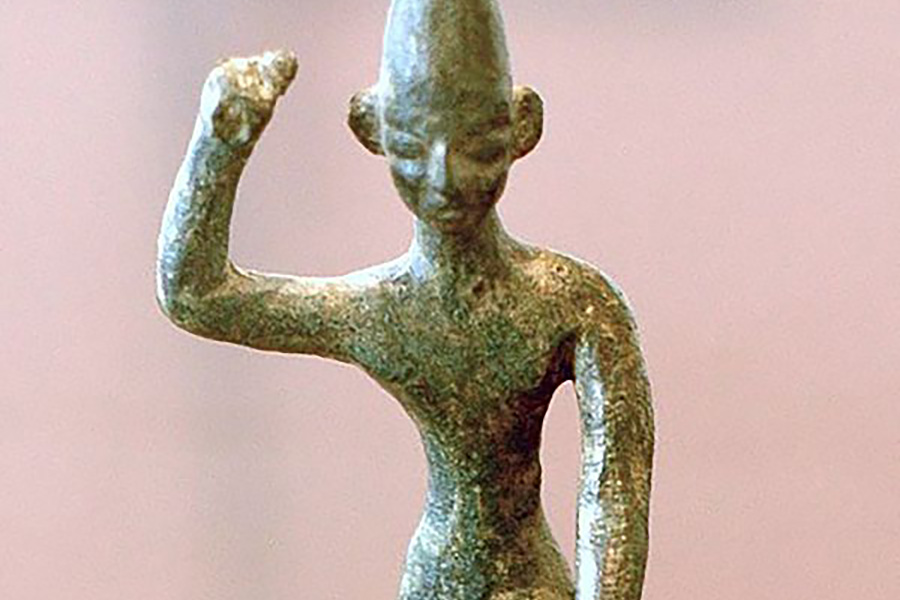The word uashan (𐤅𐤔𐤍) means “and two” meaning and a cardinal number, 1 plus 1.
It could also be an error for the word 𐤉𐤔𐤍 (yashan) which means old.
However, it can be a mistake that was made when translating the scriptures. In 𐤀 𐤔𐤌𐤅𐤀𐤋 (1 Shamaual) 8:2; we read, “Now the name of his (Samuel’s) first-born was Joel; and the name of his second Abiah.”
In 𐤀 𐤃𐤁𐤓𐤉־𐤄𐤉𐤌𐤉𐤌 (1 Dabaray Hayamayam) 6:28, the word 𐤉𐤅𐤀𐤋 (Yauaal) is lost out of the text in this place, and “ושני (vesheni)”, which signifies “and the second”, and which refers to Abiah, is made here into a proper name.
The Septuagint, Vulgate, and Chaldee, copy this blunder; but the Syriac and Arabic read as in 1 Samuel 8:2. The MSS. have all copied the corrupted Hebrew in this place.
The Paleo-Hebrew language or the original language of the Ābarayam is one spoken with an emphasis on the rauakh (breath, wind, spirit). With the language of the Ābarayam, each letter has a meaning and a number associated with it that adds meaning to each word they’re used with. Below you will be able to learn more about the letter in Ancient Hebrew, Yiddish Hebrew, Greek, and much more.
Letter Meanings
| Letter | Meaning |
|---|---|
| 𐤅 (u) – ua [ýa] | and, nail, tent peg, hook, to secure, connect, Messiah Prefix: and |
| 𐤔 (sh) – sha | teeth, eat, consume, destroy, bite, two, change, divide, press, repeat |
| 𐤍 (n) – na | offspring, seed, fish, heir, kingdom, continue, perpetuate Suffix: forming nouns denoting one with a certain characteristic. Suffix: forming names of chemical elements. |
Gematria Calculator
| Ābarayat | Hebrew | English | Simple | |
|---|---|---|---|---|
| 𐤅𐤔𐤍 (uashan) | ||||
| and two | ||||
| וַשִׁנִ (Vashn) | ||||
| () | ||||
| () |
Based on the meaning of the letters the word could be defined as:
- “
- Combines Ua and Shan
- And two
- And tooth
- And ivory
Definitions for 𐤅𐤔𐤍 / uashan
| Language | Word | Transliteration | Pronunciation | Definition |
|---|---|---|---|---|
| Ābarayat | 𐤅𐤔𐤍 | uashan | oo-shawn | And two |
| English | and two | and two | and too | and a cardinal number, 1 plus 1 |
| Hebrew | וַשִׁנִ | Vashn | vashn | And two |
| Arabic | ||||
| Greek |
Images for 𐤅𐤔𐤍 / uashan


Definitions for 𐤅𐤔𐤍𐤉 / uashanay
When adding the 𐤉 (yad) to the end of a word, it creates a possessive of the original word. It can either signify “my…” or identify a member of a nation. For example, 𐤏𐤁𐤓 (Ābar) is the progenitor, but 𐤏𐤁𐤓𐤉 (Ābaray) is the singular descendant of him also known as a Hebrew.
| Language | Word | Transliteration | Pronunciation | Definition |
|---|---|---|---|---|
| Ābarayat | 𐤅𐤔𐤍𐤉 | uashanay | oo-sha-ney | and second |
| English | and second | and second | and sek-uhnd | and next after the first; being the ordinal number for two. |
| Hebrew | וַשִׁנִי | Vashni | vash-nee' | Vashni |
| Arabic | ||||
| Greek |
Images for 𐤅𐤔𐤍𐤉 / uashanay


Definitions for /
When adding the 𐤌 (mayam) after the 𐤉 (yad) to the end of a word, it creates a plural of the original word. It can identify multiple members of a nation. For example, 𐤏𐤁𐤓 (Ābar) is the progenitor, but 𐤏𐤁𐤓𐤉𐤌 (Ābarayam) are the plural descendants of him also known as Hebrews.
| Language | Word | Transliteration | Pronunciation | Definition |
|---|---|---|---|---|
| Ābarayat | ||||
| English | ||||
| Hebrew | ||||
| Arabic | ||||
| Greek |
Images for /


Definitions for /
When adding the 𐤕 (tau) after the 𐤉 (yad) to the end of a word, it creates a plural of the original word. It identifies the language or a sign of a nation’s existence. For example, 𐤏𐤁𐤓 (Ābar) is the progenitor, but 𐤏𐤁𐤓𐤉𐤕 (Ābarayat) is the language of him also known as Paleo-Hebrew language.
| Language | Word | Transliteration | Pronunciation | Definition |
|---|---|---|---|---|
| Ābarayat | ||||
| English | ||||
| Hebrew | ||||
| Arabic | ||||
| Greek |
Images for /


Classification
You can continue your studies of the words by viewing Strong’s entries for:



